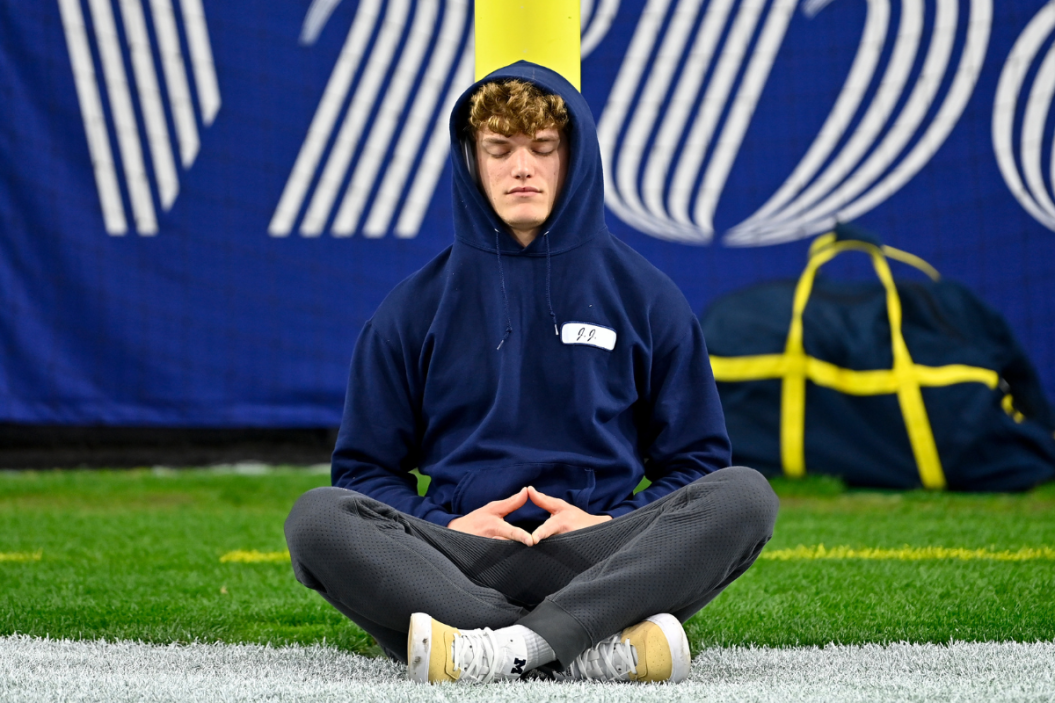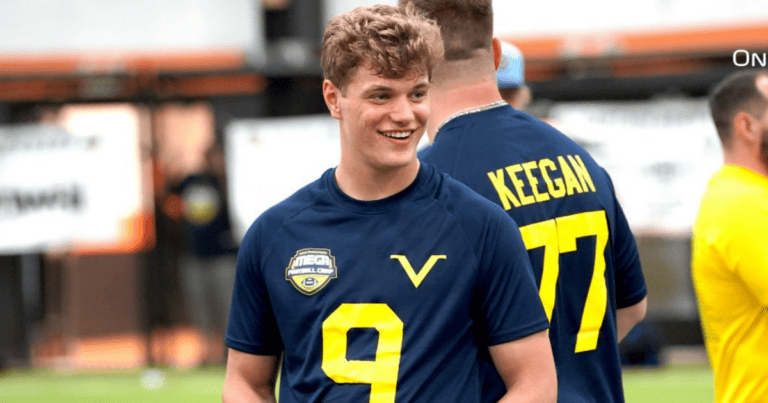JJ McCarthy’s Surgical History

JJ McCarthy, the talented quarterback for the University of Michigan Wolverines, has faced a number of surgical procedures throughout his career. These surgeries have impacted his athletic performance and have been a topic of discussion among fans and analysts alike. This section delves into McCarthy’s known surgical history, exploring the dates, procedures, and outcomes of these interventions. It also examines the potential impact of these surgeries on his athletic performance, providing insights into how they may have affected his abilities on the field.
Surgical Procedures and Outcomes
This section Artikels the known surgical procedures that JJ McCarthy has undergone, including the dates, types of procedures, and reported outcomes. This information provides a comprehensive overview of McCarthy’s surgical history and allows for an understanding of the potential impact these procedures may have had on his athletic career.
- Shoulder Surgery (2021): McCarthy underwent shoulder surgery in 2021, likely to address an injury sustained during the previous season. The specific details of the injury and the type of surgery performed are not publicly available. However, the surgery’s outcome is believed to have been successful, allowing McCarthy to return to the field for the 2021 season.
- Knee Surgery (2022): McCarthy underwent knee surgery in the offseason leading up to the 2022 season. This surgery, which involved a procedure to repair a torn ACL, was a significant setback for the young quarterback. While the surgery was successful, the recovery process was expected to take several months, potentially impacting his availability for the early part of the season. McCarthy ultimately returned to the field in October 2022, demonstrating his resilience and determination.
Impact on Athletic Performance
The surgeries that JJ McCarthy has undergone have undoubtedly had an impact on his athletic performance. This section explores the potential effects of these surgeries on his abilities on the field, considering both the immediate and long-term implications.
- Shoulder Surgery: While the specific details of the shoulder injury and the surgery are not publicly available, it is reasonable to assume that the surgery may have temporarily affected McCarthy’s throwing motion and overall arm strength. However, his successful return to the field in 2021 suggests that the surgery did not have a lasting impact on his performance.
- Knee Surgery: The knee surgery, specifically the ACL repair, is a more serious injury that can significantly impact an athlete’s mobility and agility. McCarthy’s recovery from this surgery was expected to take several months, potentially affecting his availability for the early part of the 2022 season. While he eventually returned to the field, it is possible that his performance was affected during the early stages of his recovery. The long-term effects of the surgery on his athletic performance remain to be seen, but his resilience and determination suggest that he is capable of overcoming this challenge.
Common Surgeries for Athletes Like JJ McCarthy

As a quarterback, JJ McCarthy faces a unique set of risks and potential injuries that could require surgery. The most common surgical procedures for quarterbacks are those addressing injuries to the shoulder, knee, and ankle. These injuries can significantly impact a player’s performance and longevity, making understanding these procedures and their recovery timelines crucial.
Shoulder Surgeries
Shoulder injuries are common among quarterbacks due to the repetitive throwing motion and potential for direct contact.
- Rotator Cuff Repair: This surgery repairs tears in the muscles and tendons that surround the shoulder joint, commonly caused by overuse or a sudden injury. The procedure involves stitching the torn tendons back to the bone, restoring stability and function. Recovery typically takes 4-6 months, with a gradual return to throwing activities.
- Labral Repair: The labrum is a ring of cartilage that helps stabilize the shoulder joint. Tears in the labrum can cause pain and instability, often requiring surgical repair. This procedure involves reattaching the torn labrum to the bone, using sutures or anchors. Recovery usually takes 3-4 months, with a gradual return to throwing activities.
- Acromioclavicular (AC) Joint Reconstruction: This surgery addresses injuries to the joint where the collarbone (clavicle) meets the shoulder blade (scapula). Injuries to this joint can cause pain, instability, and limitations in arm movement. Reconstruction involves stabilizing the joint using screws, plates, or ligaments. Recovery typically takes 3-4 months, with a gradual return to throwing activities.
Knee Surgeries, Jj mccarthy surgery
Knee injuries are also prevalent among quarterbacks, particularly due to the risk of contact during tackles or collisions.
- Anterior Cruciate Ligament (ACL) Reconstruction: The ACL is a major ligament in the knee that helps stabilize the joint. A torn ACL often requires surgical reconstruction, typically using a graft from another tendon or ligament. Recovery typically takes 6-9 months, with a gradual return to athletic activities.
- Posterior Cruciate Ligament (PCL) Reconstruction: The PCL is another major ligament in the knee that helps stabilize the joint. A torn PCL often requires surgical reconstruction, using a graft from another tendon or ligament. Recovery typically takes 6-9 months, with a gradual return to athletic activities.
- Meniscus Repair or Removal: The meniscus is a C-shaped piece of cartilage that acts as a shock absorber in the knee. Tears in the meniscus can cause pain, swelling, and limited mobility. Repair involves stitching the torn meniscus back together, while removal involves removing the damaged portion. Recovery typically takes 4-6 weeks for repair and 2-4 weeks for removal.
Ankle Surgeries
Ankle injuries can occur due to tackles or sudden changes in direction, impacting a quarterback’s ability to move and throw effectively.
- Ankle Ligament Reconstruction: The ankle ligaments provide stability to the joint. A torn ligament often requires surgical reconstruction, using a graft from another tendon or ligament. Recovery typically takes 4-6 months, with a gradual return to athletic activities.
- Ankle Fusion: This procedure involves fusing the bones of the ankle joint together, eliminating movement and pain. This is usually a last resort for severe arthritis or instability. Recovery typically takes 3-4 months, with a limited return to athletic activities.
Impact of Surgery on JJ McCarthy’s Future: Jj Mccarthy Surgery

JJ McCarthy’s surgical history, particularly the multiple surgeries he has undergone, raises concerns about the potential long-term impact on his athletic career. While the specific details of his surgeries are not publicly available, the nature of these procedures, especially those involving the throwing arm, can have significant implications for his future performance.
Potential Long-Term Effects
The long-term effects of surgery on athletes can vary greatly depending on the type of surgery, the individual’s recovery process, and their overall athletic ability. However, some common potential effects that could impact McCarthy’s future include:
- Reduced Range of Motion: Surgery, especially on the shoulder, can limit the full range of motion, potentially affecting McCarthy’s throwing mechanics and accuracy.
- Decreased Strength: Muscle weakness after surgery is a common occurrence, particularly in the shoulder and surrounding areas. This can lead to a reduction in throwing velocity and overall strength.
- Increased Risk of Re-Injury: The repaired area might be more susceptible to future injuries, particularly during high-impact activities like football.
- Pain and Discomfort: Post-surgery pain and discomfort can affect McCarthy’s ability to train effectively and perform at his best.
Impact on Upcoming Seasons
McCarthy’s recovery process will significantly influence his performance in upcoming seasons. The time it takes to regain full strength, mobility, and confidence will determine his readiness to compete at the highest level. Factors such as the complexity of the surgery, his individual healing rate, and the intensity of his rehabilitation program will all play a role in his return to the field.
- Delayed Return: If his recovery is slower than expected, McCarthy might miss significant portions of the upcoming season, potentially impacting his development and team performance.
- Performance Limitations: Even if he returns on schedule, he might experience some limitations in his performance, such as reduced throwing velocity or accuracy, during the early stages of his comeback.
- Mental Impact: The physical and mental challenges of recovery can take a toll on athletes, potentially affecting their confidence and motivation.
Hypothetical Training Program
A well-structured training program is crucial for McCarthy’s post-surgery recovery and future performance. It should focus on rehabilitation, strength building, and gradual return to athletic activity.
- Rehabilitation Phase: This phase will focus on restoring range of motion, reducing pain and inflammation, and improving muscle strength and flexibility. It will involve physical therapy exercises, guided by a qualified medical professional.
- Strength Training: Once the rehabilitation phase is complete, McCarthy will transition to a strength training program aimed at building muscle mass and strength in the shoulder, core, and lower body. This will involve weightlifting exercises and functional training drills.
- Gradual Return to Activity: The final phase will involve a gradual return to athletic activity, starting with light throwing drills and progressing to more intense training and game-like situations. This will be closely monitored by medical professionals to ensure safe and effective progress.
Jj mccarthy surgery – JJ McCarthy’s surgery has sidelined him for a period, impacting the Vikings’ offensive strategy. The team’s depth chart, available here , provides insight into how the Vikings might adjust without McCarthy. His return timeline remains uncertain, but the Vikings’ depth chart offers a glimpse into how they might navigate this period of transition.
JJ McCarthy surgery, often performed on athletes, can be necessary due to various knee injuries. One common cause for such surgery is a meniscus tear , which affects the cartilage in the knee joint. This tear can lead to pain, swelling, and instability, making it difficult to participate in sports or perform daily activities.
Therefore, understanding the causes and treatment options for meniscus tears is crucial for athletes and individuals alike, especially when considering procedures like JJ McCarthy surgery.
